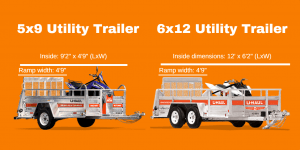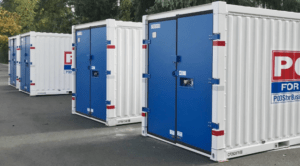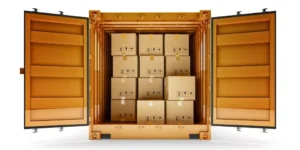Garage Storage Advice: Don’t Keep These Items in the Garage
March 8, 2023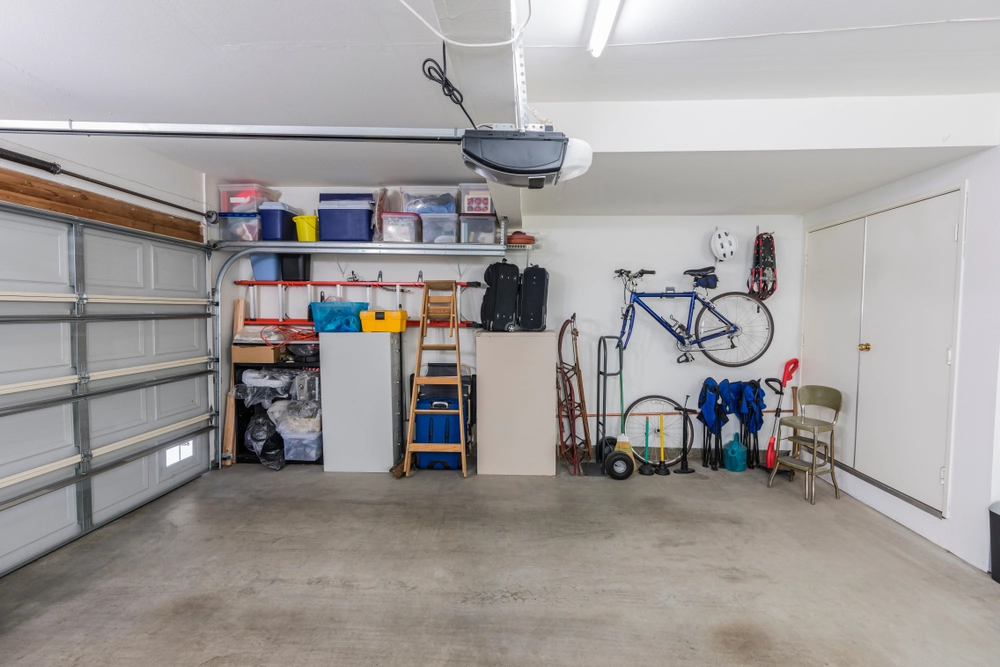
You may be in for a surprise if you utilize your garage to store stuff that you don’t have room for in your home. Moisture, heat, and vermin all wreak havoc on the items that line your garage shelves or are stashed away in their dark recesses. In fact, when placed in the garage, several of those goods may become harmful.
Make sure it’s safe to store another box or unused item in your garage before doing so.
Need assistance storing your items? Call us at (888) 534-2250, We are here to help you!
Never keep the following items in your garage:
Teddy bears can attract pests and become infested, electrical toys can be dangerous if they gather moisture, and crafting tools can melt in excessive temperatures. To be on the safe side, keep your children’s toys inside your home.
Extreme temperatures can quickly harm old devices like computers, laptops, DVD players, game consoles, and televisions, but wetness poses the greatest risk. Electrocution can be caused by any condensation or moisture. Keeping these goods inside or donating them is your choice.
Do you have an extra rug or carpet remnants? They should not be kept in the garage. Mold and mildew can grow on damp clothes, scents can enter the fibers, and bugs can get into the rolled-up lengths. In addition, carpets and rugs that are exposed to direct sunlight will fade over time.
When stored in the garage, don’t anticipate your clothes to fare any better than your rugs. Mold can grow on baby items, winter jackets can develop strange scents, and sweaters can be moth-damaged. Almost every fabric item, even sleeping bags, will succumb to the same fate. Keep them in your house.
In the garage, it’s not just plywood that suffers. Almost every timber is vulnerable to extreme circumstances. As a result, expect some damage to your wood furniture if you store it in your garage. Changes in humidity, for example, will cause the wood to swell and compress, resulting in cracks that you may not be able to repair.
Personal belongings have no place in the garage. Coins can corrode, Toy Cars can rust, and collector editions can mold due to moisture. Vinyl records can distort in the heat, and dirt can ruin autographed posters. It’s much easier to steal these valuables from your garage than from a secure location within your house.
Related
What are the Qualities of a Good Storage Facility
Guide to Renting a Storage Unit for First-Timers
Renting Storage When Moving: Do You Really Need It?
Books, like photos, struggle to survive the humidity and dampness of a garage. Their pages bend and their spines distort as time passes. In addition, silverfish and other insects in your garage will devour the glue that holds books together. Store periodicals and vital paperwork within your home in addition to books and photographs.
Who doesn’t have a garage full of wood scraps? It is typically not a problem for a short-term project. Wood, on the other hand, can warp over time due to changes in temperature and humidity. If you don’t have anywhere else to put your scraps, the garage will suffice. Just keep in mind that by the time you need it, the wood may have warped and become worthless.
Pet food, like human food, should be stored only in your garage. Although the temperature has no effect on pet food in the same way that it does on human food, rats and other pests can readily eat through the bags in which it is often packaged. Keep it in a firmly sealed plastic or metal container if you have to store it in the garage.
Photographs should never be kept in the garage. Heat and moisture can produce mildew on the photographs. The photo’s margins may curl as a result of the garage’s harsh conditions. Locate a safe spot to store them inside, and make sure to scan any originals.
Food of any kind should never be stored in your garage. Rats and other pests are attracted to fresh food, and they can readily break into bags and cardboard boxes. The situation isn’t any better with canned products. Temperature changes can cause bacteria to thrive within cans, and humidity can rust the metal of cans and metal lids on glass jars. As a result, the rust might create a chemical reaction in the food, rendering it unsafe to eat.
Alcoholic beverages such as beer, wine, and other alcoholic beverages should not be kept in the garage. Heat and light can change the taste of wine and even transform it into vinegar. Instead, provide space for them within your home in a dark, cool location.
Because propane tanks might leak, storing them in your garage poses a risk. When a propane tank is leaking, it just takes one spark to start a fire. Propane tanks should be kept in a well-ventilated place away from your home.
In piles of stacked wood, pests such as spiders and termites establish their home. Those pests can readily penetrate your home area if that wood is stored in your garage. Keep firewood at least 20 feet away from your house to avoid an infestation.
So, what can you do if you have a lot of stuff that shouldn’t go in the garage but don’t have enough room in your house to put it? Renting a climate-controlled storage facility is one option. These units are usually found inside a structure that maintains the temperature and provides shelter from the elements. Keeping your belongings in a climate-controlled container assures you that they will arrive in the best possible shape.
Related Articles:

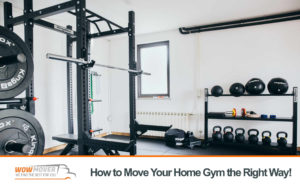


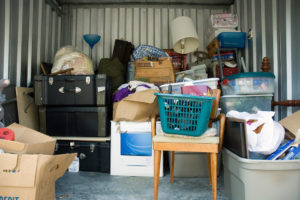

When it comes to car shipping services, everybody has the same basic problem in their minds. How much for a car to ship? Although quotes for transport cars will vary dramatically, there are a few ways to ensure that rates are as affordable as possible. It will still come with more competitive rates for newcomers to get their car driven on an open car carrier.
Savings, though, don’t have to stop there. Instead of door-to-door, you can also choose to get your car delivered terminal-to-terminal. Yeah, this means that when dropping off and picking up your car, you’ll have to arrange transportation from and to the airport.
However, this discomfort will translate into savings. Of course, with a terminal-to-terminal service, you must also consider the costs you may accrue. This includes expenses for storage, transportation costs, and charges for gas.
Related:
Is Your Car Safe During Auto Transport? Is Shipping a Car …
Things to Remember When Shipping a Car
However, this approach may be your most expedient and cheapest alternative if you live near a readily available terminal.
Car shipping service prices are unpredictable when it comes to transporting vehicles. The cost depends on a number of different factors, from the type and weight of the vehicle to the distance and company you go with. On average, however, for shorter distance travel, and as high as $1,500 for long hauls, you can expect around $500-$700. If it ends up being a little higher than that for a heavier truck, however, don’t be surprised.
Car shipping service rates rely on supply and demand as well. Right now, there are about 10,000 cars waiting to be shipped out of California. There are fewer truckers available to ship cars because of this.
If you choose an enclosed trailer for delivery, even if your vehicle is souped-up and modded, other variables that impact the shipping price include whether or not the car is in working condition.
Now that you have a better understanding of the different variables that go into the decision of a customer to have their car professionally delivered, you’re probably thinking about how much you need to budget. You have to know that the actual price you’re going to pay is dependent on several variables.
These considerations include:
BUILT AND MODEL
The most knowledgeable and customer-centric ones will have a shipping quote calculator when you visit a car shipper’s webpage. This calculator will give you an instant quote that is free and non-binding. Never pay for a quotation for delivery.
You’ll find that the Car shipping services calculator asks several different questions when you go through having a quote. Some of these have to do with the vehicle’s make and model.
Why are these variables significant? And they’re size-indicative. The longer and bigger a vehicle are, the more space a transporter takes up, and the more it would cost to drive.
Larger dimensions and changes to vehicles can also contribute to carrier adjustments.
TIME OF THE YEAR
There are a few things you need to keep in mind when it comes to seasonality. Next, for car transporters, summer happens to be the busiest time of year.
This is when the majority of individuals plan to travel. So, because of the extra demand, you can not get the best offers at this time of year.
While you would automatically believe that the cheapest time for car shipping is in winter, think twice. Ice and snow combine to make driving a large auto transporter a virtual disaster during the coldest months.
Prices and delivery times appear to go up as a result. What would be your safest bet? The higher your flexibility, the better the price you will get.
DISTANCE
For short distances car shipping services, the average cost of transporting a car is $1.96 per mile. Those that fall within a one to 500-mile range involve short distances.
So, spend at least $590 for a ride that’s about 300 miles long to cover costs and fees.
What about a longer ride? Moderate distances are considered for journeys of 500 to 1,000 miles. They run around $0.93 per mile, they come out, give or take, to $950 for 1,000 miles.
As far as long distances are concerned, you’ll pay around $0.58 per mile when you take trips of 1,500 miles or more. A journey of this length can cost you $870.
Like shopping in quantity at the supermarket, the farther you go, the better the rate per mile will be.
STATE OF VEHICLE
You’ll still need to accurately record your vehicle’s state. About why? And it’s far cheaper to ship cars that run than those who don’t.
To properly load a car onto a carrier trailer, the ability to steer, roll, and brake is crucial. If your car doesn’t have these features, then to shift it into position, the driver must rely on a winch or other equipment.
It is a time-consuming operation to deal with an inoperable car, and not one that a driver takes easily. A forklift is also required when loading. For this purpose, for vehicles that can roll, brake, and steer, many auto shippers only give quotes.
Drop-off and Pick-Up Location
You’ll want to keep in mind where the places for your pick up and drop off are located. It is because you’ll end up paying more the further the driver’s regular route.
Usually, metropolitan areas have plenty of available trucks and drivers. You will find more supply and some of the best prices since demand is high.
However, when it comes to rural areas, prices are climbing. Although an experienced and competent business should go to great lengths to secure you the best possible rate, expect to pay more in less trafficked areas no matter where you live.
The more you live off the main highway, the more you will have to end up paying.
TYPE OF TRANSPORT
We have already discussed it partially, but it is important to understand the choices available to you concerning the shipping of vehicles. By far, freight on an open carrier remains the most common and inexpensive alternative.
Open-Air carriers don’t protect vehicles from the weather or road grime, as the name suggests. They also do not shield cars from gravel and other debris from the pavement. But for passengers and ordinary drivers, they fit well.
After all, it is equivalent to a road trip to the misuse a vehicle would get on an open carrier. That said, what if you have a vehicle worthy of investment? You’ll need to pay more, in this case, to get an enclosed carrier.
Related Articles:
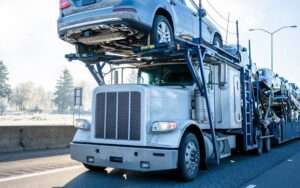



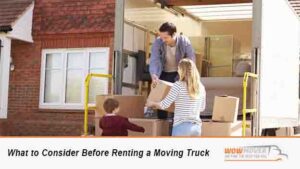

How to Organize Items Inside a Moving Container: You must drive, operate, and park a huge truck in an optimum unloading position when renting a moving truck. Using a moving container instead of a vehicle to plan your move can save you a lot of time and stress. Right in front of the house, the container is parked. After the container has been filled, a truck arrives to pick it up and deliver it to your new residence, where it can be easily unloaded.
You want to make the most of the available space when planning your container usage. To make the most out of your container rental, use these tips and tricks to organize your belongings, save a lot of room, and get the most out of it.
The first thing you should focus on is the carpets before you begin to pack the container. You may save a lot of space when transporting throw carpets, area rugs, or floor mats by placing them flat on the bottom of the container. You would take up a lot of space and the rugs would suddenly become bulky if you rolled them up.
Add a little protection with a plastic protective cover or film once you’ve laid the carpets flat. On the other hand, you may lay down a huge sheet that you don’t mind being scratched or soiled on. The carpets will stay level until the container is unloaded, and you won’t have to worry about any creases or curled edges that may arise when the carpet is rolled up.
To keep products secure when moving from one location to another, the inside of a moving container is frequently reinforced with steel beams. Use heavy-duty magnetic hooks to make the most of the steel beams. You can use the hooks to hang objects and keep them secure for the length of the move while you pack the container.
You may hang extension cords, charging cables, and other wires, for example, right on the hooks without worrying about tangles or problems. Lighter bags with items can also be held on the magnetic hooks.
Larger hooks will make it easier to keep track of long objects and organize them. Three hooks can be uniformly spaced across the moving container’s side. Pool cues, weed trimmers, rakes, shovels, and other long tools can all be held by the hooks. To fit more goods, use the magnetic system on both sides of the container.
You will have more area in the center to fit larger goods if you hang them on the side.
Related : What Not to Pack Inside Your Moving Container While Moving
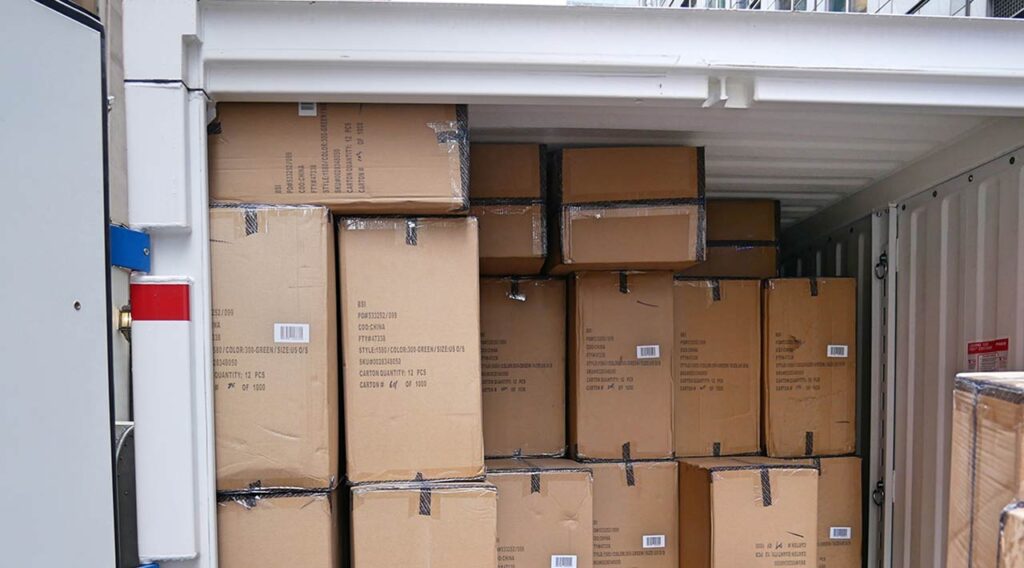
Following the installation of the carpets in the moving container, the bulky furniture should be your next priority. Try to keep the furniture facing straight up when placing it inside the moving container. You’ll have plenty of room to stack boxes and other small objects in the free spaces on couches, tables, and chairs.
Fill the moving container’s whole bottom layer with the furnishings. Remove the cushions from the couches and chairs to free up some room. You can simply fit the cushions into a vehicle’s backseat and use the excess space to store other things.
You should keep an open plastic tote on the outside of a moving container as you fill it up. You can keep little items in the plastic tote as you go. Keep plastic zip-up baggies in the container as well. If you’re packing a computer, for example, you may put the power cords in a plastic bag, label it, and chuck it into the tote.
Small bits may fall off or be removed to conserve room when you move furniture and other items. Remove the bottom of a bed frame’s plastic bed risers, for example. You will be able to easily discover the items as you unload your home if you identify them and put them in a single container.
You can stay organized and avoid having to delay packing if you store the tote next to the container.
You might be tempted to put a mattress on the bottom of the moving container at first. Not only does a thick mattress take up a lot of room, but it’s also probable that other furniture will cause the mattress springs to deform. You can set the mattress right on top of the other goods if you leave a little ceiling room inside the moving container.
There will be no strain on the mattress and it will be able to slide directly into the top. You can easily pull out the mattress first, place it in the home, and finish the rest of the unpacking process once the container has been brought to your new site. If you’re packing a box spring, start with the box spring and work your way up to the mattress.
Contact us at Wowmover for all of your moving needs. With our pickup and drop-off services, we can help you get a moving container and make your move go more smoothly.
Related Articles:
